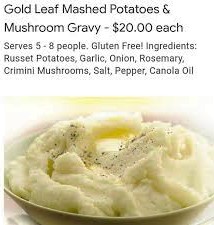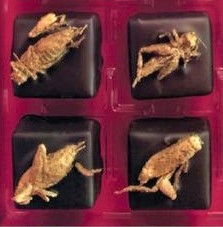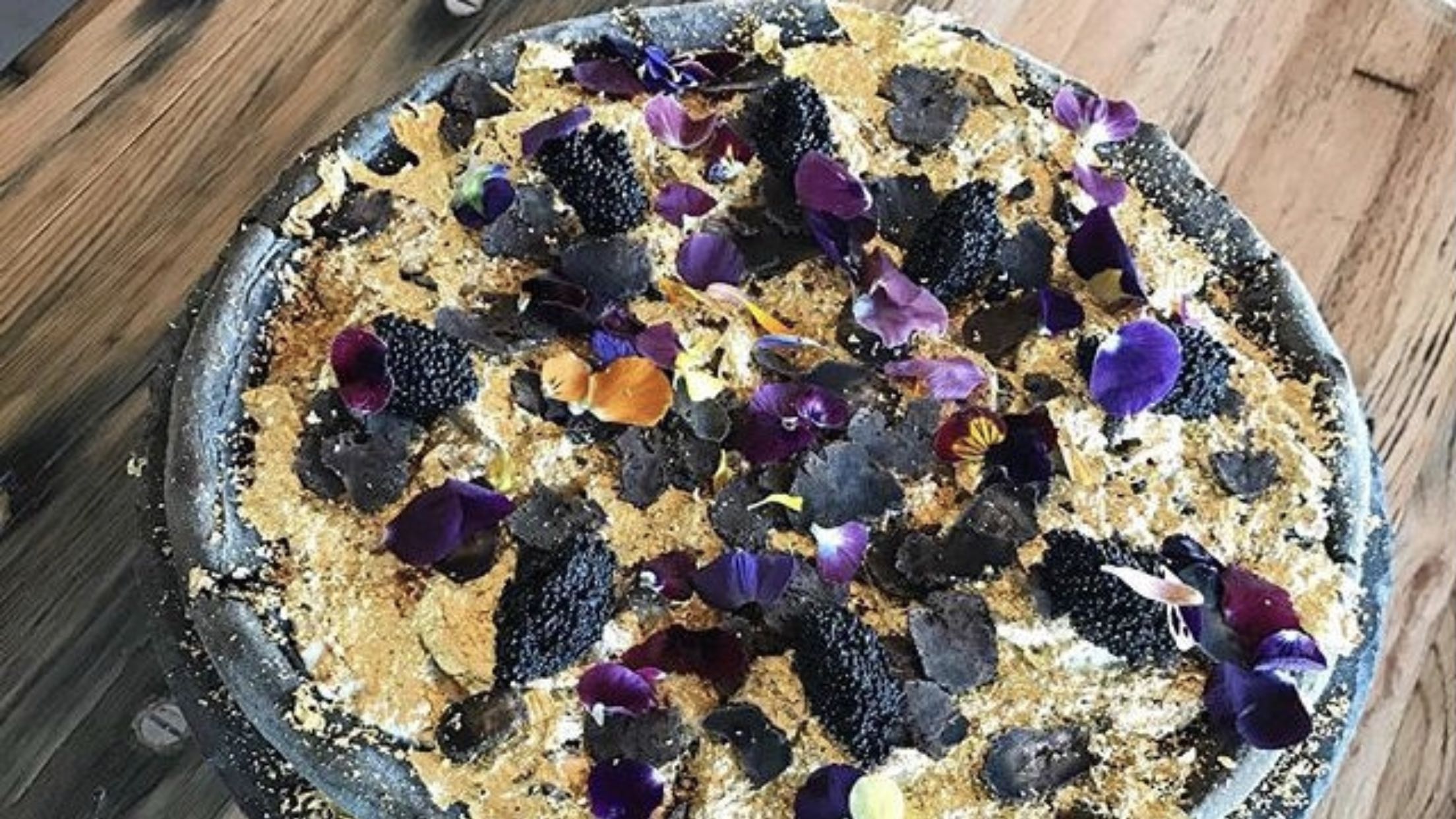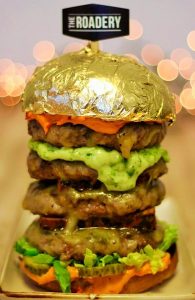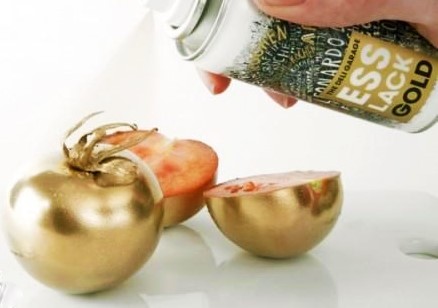
I was looking up something entirely different. When I’d entered “history of” several (presumably popular) topics showed up, one of which was “history of eating gold.” At the risk of revealing just how out of the food loop I am, eating gold was new to me. So I read more.
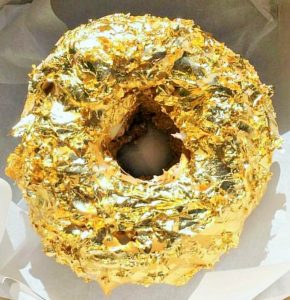
According to Wikipedia, pictures of foods with edible gold are all over social media. (So maybe it isn’t just the food fad loop I’m out of!) Apparently this fad started as a viral phenomenon in Dubai, and now there’s a worldwide proliferation of restaurants and pastries using edible gold, including more accessible (i.e., less expensive) cafés and restaurants.

(Church of Camarate in Portugal)
Putting gold on food requires a very similar technique to putting gold on fancy furniture, musical instruments, books, paintings, and just about anything else that stood still long for Baroque decorators to gild. Gilders today primarily use oil gilding or water gilding techniques, both of which are virtually identical to techniques used by Egyptian tomb decorators in the 23rd century BCE. (Ceramic objects, large surfaces such as outdoor statues, and metal or glass surfaces are often gilded with other methods, most of which make food entirely inedible.)
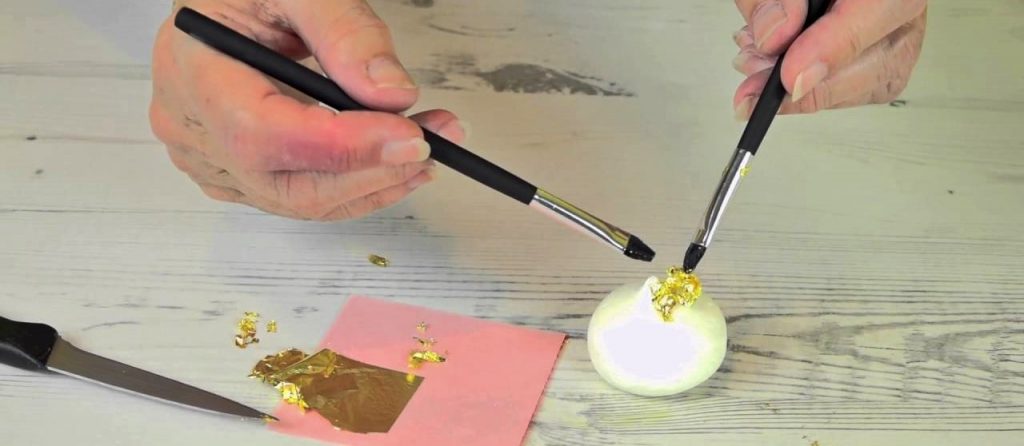
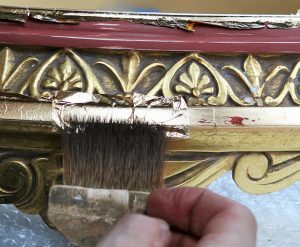
- The surface to be gilded is prepared.
- Non-food surfaces are made as smooth as possible. This usually involves coating it with finely sanded gesso or a similar material.
- Food surfaces are smoothed and settled. Any cooking should be done before applying the gold.
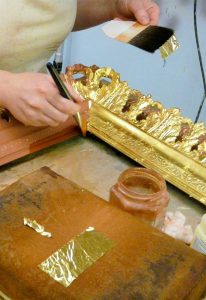
- An adhesive is applied to the surface.
- The smoothed gesso on non-food surfaces is covered with sizing.
- Oil gilding uses linseed oil boiled with lead oxide litharge.
- “Water” gilding uses rabbit-skin glue flooded with high-proof grain alcohol. (A friend who worked as a gilder told me she used Everclear; there was usually enough left for a drink when she finished a commission!)
- Food surfaces are brushed with alcohol or very small amounts of water.
- The smoothed gesso on non-food surfaces is covered with sizing.
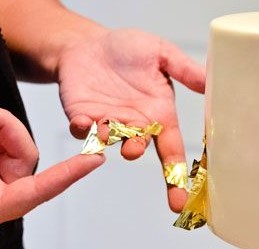
- The gold leaf, which is only a few molecules thick, is lifted using the static on a gilding brush or a special gilder’s knife. Touching the sheet of gold leaf directly will tear it.
- Gold leaf is laid on the intended surface, gently pressed into adhesive with a soft brush, and left to dry.
- For non-food gilding, the drying process includes a chemical bond forming between the gold leaf, the sizing, and the gesso underneath.
- The adhesive water or alcohol used on edible gilding simply evaporates, leaving the gold leaf stuck to the surface below but not chemically bonded.
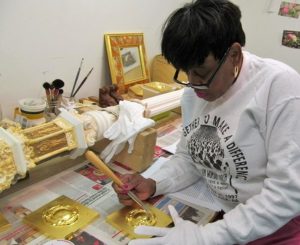
- Excess gold leaf is brushed off, usually swept carefully into a jar to be used in another project.
- After thoroughly drying (usually at least a day), the gilding is burnished. Because the gold is still thinner than the width of a human hair, burnishing must be done gently to avoid rubbing it off altogether.
- Gold leaf applied with water gilding can be burnished to mirror brightness using agate stones.
- It is very difficult to burnish gilding on food, though some people are just overachievers.
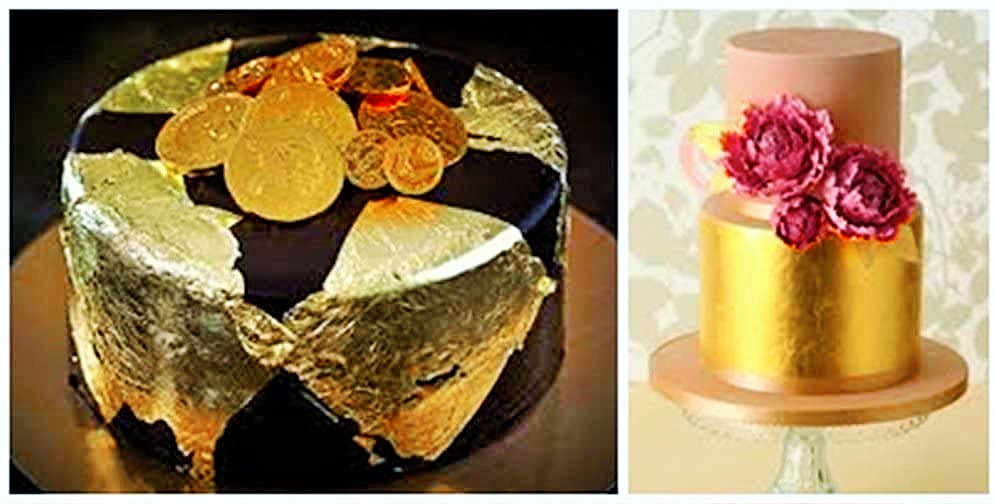

Most people are aware of gold used for gilding, artworks, architecture, and general beautification. Ancient Indians and Egyptians used gold in many ways: architecture, decoration, ornaments, religious ceremonies, and jewelry. They also used gold for mental, spiritual, and physical purification. They ingested gold in elixirs for medicinal purposes.
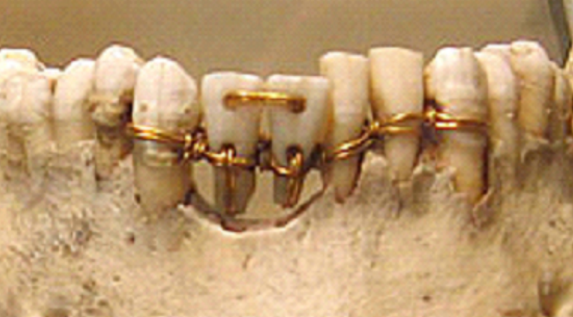
(I’ll bet he still forgot his retainer in the cafeteria.)
Medicines and elixirs made by court physicians, as well as the use of gold as a decorative garnish for foods and drinks, have been found in Japan, China, and India.

In Europe during the Middle Ages, gold as food decoration became a marker of extreme luxury and prestige. By this time, court physicians believed that gold could help with arthritis and other problems of sore limbs. During the Renaissance, this gold-as-medicine use got a big boost from Paracelsus (1493-1541), considered the father of modern pharmacology, who used gold in both pills and powders. This focus on gold for health held until the twentieth century.
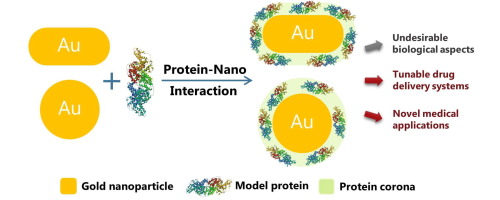
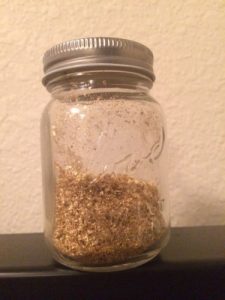
But don’t rush out to grind up your gold jewelry. It won’t do anything for COVID-19! In fact, regular gold doesn’t do anything in the body: it isn’t even absorbed. There is some research underway into the use of particularly controlled gold nanoparticles as a system of drug delivery within the body, but that is still a long way from hitting the shelves at your local drugstore. Although edible gold is safe to eat, it has no nutritional value or health benefits. Also, be aware that edible gold must meet strict requirements under the code E 175. You can also find edible gold that is certified to be kosher or halal!
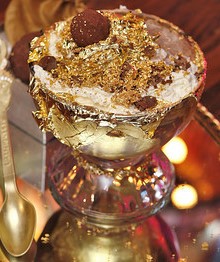
If you’re interested in eating gold, you can find it everywhere in the online market, worldwide, and from WalMart to Amazon. It’s available in gold leaves, flakes, or powders. And because it doesn’t do anything but look pretty, it’s usually used on top of the dish or drink. The New York restaurant Serendipity 3 has created the world’s (presumably most expensive) dessert: a $25,000 ice cream sundae 23-karat gold.
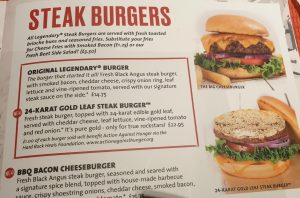
A New York City food truck, 666 Burger, offered a “Douche Burger” for $666, to mock this trend. The burger includes Kobe beef, gruyere cheese, champagne steam, foie gras, and optional toppings such as lobster or caviar, all wrapped in gold leaf sheets.
Franz Aliquo, the owner of 666 Burger said, “We took everything that people socially associate with rich people food and threw it on a burger and made it the most expensive, disgusting burger ever.” It may have been put on the menu as a joke, but the “Douche Burger” is not too far off from actual over-the-top expensive dishes (and burgers) on the menus at other restaurants. At least one person has tried to order the “Douche Burger” from the food truck.
.
.
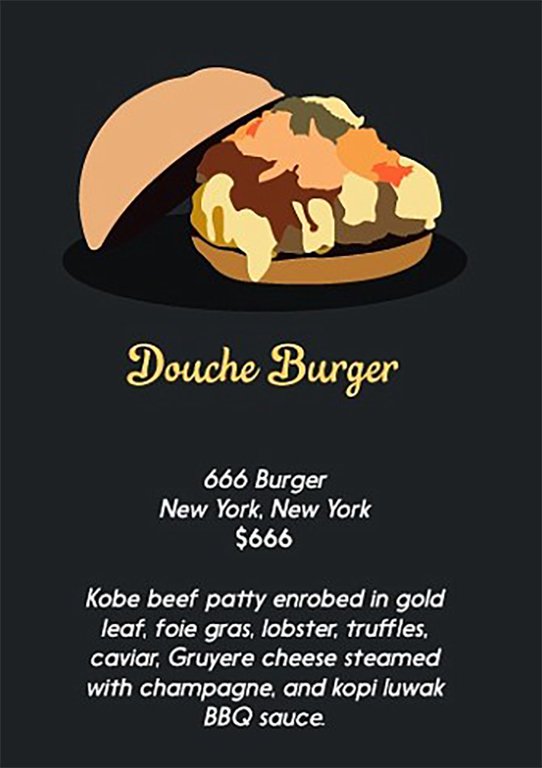
“It’s a satirical expression of these burgers that people make and try to sell in all seriousness. We took the most offensive pieces from other famous burgers and just took it up a level. I mean, what’s the point of putting gold flakes on your food? It doesn’t add to the flavor. It’s just to be able to say you ate gold flakes.”
Franz Aliquo
Edible gold doesn’t oxidize or corrode. It is inert, has no taste, smell, or nutritional value. So why consume it? Bottom line: conspicuous consumption.
